Karsten Schmidt
Department of Anesthesiology and Intensive Care Medicine, University Hospital Essen, University Duisburg-Essen, Essen, Germany
Development of an interface for digital neuromorphic hardware based on an FPGA
Aug 17, 2023Abstract:Exploring and understanding the functioning of the human brain is one of the greatest challenges for current research. Neuromorphic engineering tries to address this challenge by abstracting biological mechanisms and translating them into technology. Via the abstraction process and experiments with the resulting technical system, an attempt is made to obtain information about the biological counterpart. One subsection of Neuromorphic Engineering (NE) are Spiking Neural Networks (SNN), which describe the structures of the human brain more and more closely than Artificial Neural Networks (ANN). Together with their dedicated hardware, SNNs provide a good platform for developing new algorithms for information processing. In the context of these neuromorphic hardware platforms, this paper aims to develop an interface for a digital hardware platform (SPINN-3 Development Board) to enable the use of industrial or conventional sensors and thus create new approaches for experimental research. The basis for this endeavor is a Field Programmable Gate Array (FPGA), which is placed as a gateway between the sensors and the neuromorphic hardware. Overall, the developed system provides a robust solution for a wide variety of investigations related to neuromorphic hardware and SNNs. Furthermore, the solution also offers suitable possibilities to monitor all processes within the system in order to obtain suitable measurements, which can be examined in search of meaningful results.
Modelling and simulation of a commercially available dielectric elastomer actuator
Aug 03, 2023Abstract:In order to fully harness the potential of dielectric elastomer actu-ators (DEAs) in soft robots, advanced control methods are need-ed. An important groundwork for this is the development of a control-oriented model that can adequately describe the underly-ing dynamics of a DEA. A common feature of existing models is that always custom-made DEAs were investigated. This makes the modelling process easier, as all specifications and the struc-ture of the actuator are well known. In the case of a commercial actuator, however, only the information from the manufacturer is available and must be checked or completed during the modelling process. The aim of this paper is to explore how a commercial stacked silicone-based DEA can be modelled and how complex the model should be to properly replicate the features of the actu-ator. The static description has demonstrated the suitability of Hooke's law. In the case of dynamic description, it is shown that no viscoelastic model is needed for control-oriented modelling. However, if all features of the DEA are considered, the general-ized Kelvin-Maxwell model with three Maxwell elements shows good results, stability and computational efficiency.
Machine learning-based analysis of hyperspectral images for automated sepsis diagnosis
Jun 15, 2021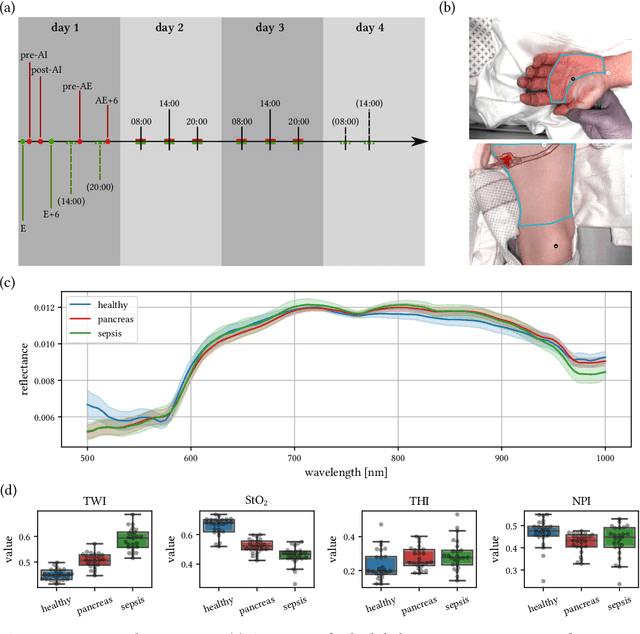
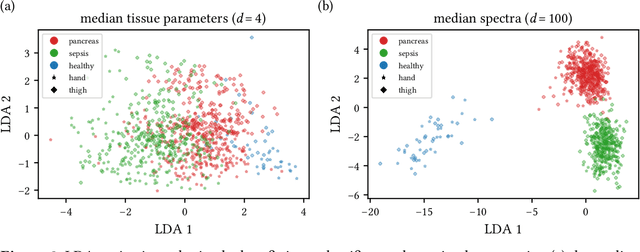

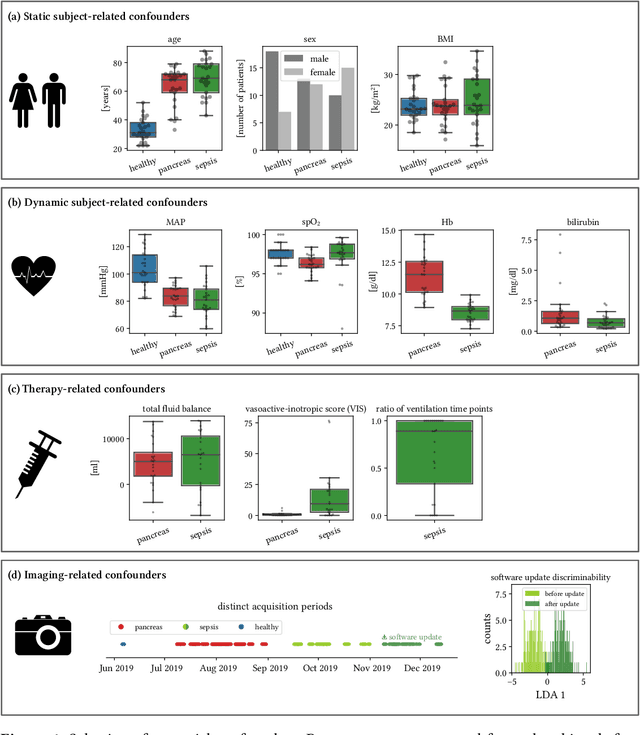
Abstract:Sepsis is a leading cause of mortality and critical illness worldwide. While robust biomarkers for early diagnosis are still missing, recent work indicates that hyperspectral imaging (HSI) has the potential to overcome this bottleneck by monitoring microcirculatory alterations. Automated machine learning-based diagnosis of sepsis based on HSI data, however, has not been explored to date. Given this gap in the literature, we leveraged an existing data set to (1) investigate whether HSI-based automated diagnosis of sepsis is possible and (2) put forth a list of possible confounders relevant for HSI-based tissue classification. While we were able to classify sepsis with an accuracy of over $98\,\%$ using the existing data, our research also revealed several subject-, therapy- and imaging-related confounders that may lead to an overestimation of algorithm performance when not balanced across the patient groups. We conclude that further prospective studies, carefully designed with respect to these confounders, are necessary to confirm the preliminary results obtained in this study.
Data-driven HR - Résumé Analysis Based on Natural Language Processing and Machine Learning
Jun 21, 2016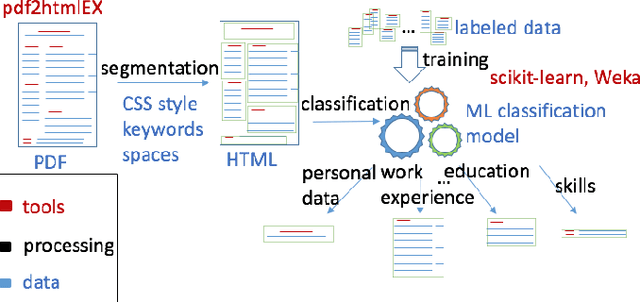

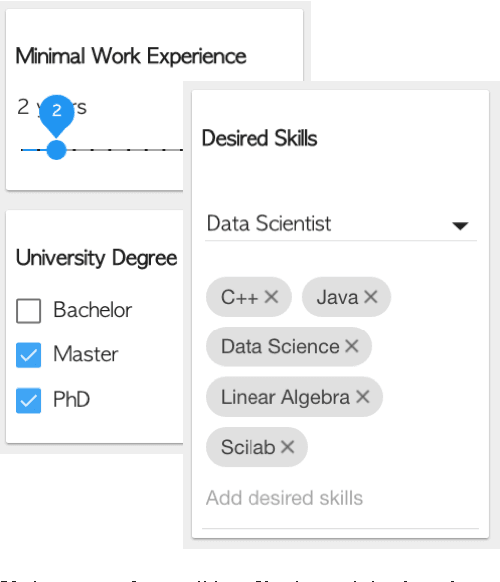
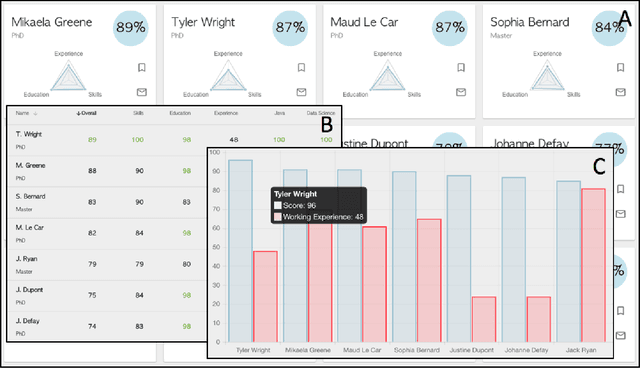
Abstract:Recruiters usually spend less than a minute looking at each r\'esum\'e when deciding whether it's worth continuing the recruitment process with the candidate. Recruiters focus on keywords, and it's almost impossible to guarantee a fair process of candidate selection. The main scope of this paper is to tackle this issue by introducing a data-driven approach that shows how to process r\'esum\'es automatically and give recruiters more time to only examine promising candidates. Furthermore, we show how to leverage Machine Learning and Natural Language Processing in order to extract all required information from the r\'esum\'es. Once the information is extracted, a ranking score is calculated. The score describes how well the candidates fit based on their education, work experience and skills. Later this paper illustrates a prototype application that shows how this novel approach can increase the productivity of recruiters. The application enables them to filter and rank candidates based on predefined job descriptions. Guided by the ranking, recruiters can get deeper insights from candidate profiles and validate why and how the application ranked them. This application shows how to improve the hiring process by giving an unbiased hiring decision support.
 Add to Chrome
Add to Chrome Add to Firefox
Add to Firefox Add to Edge
Add to Edge